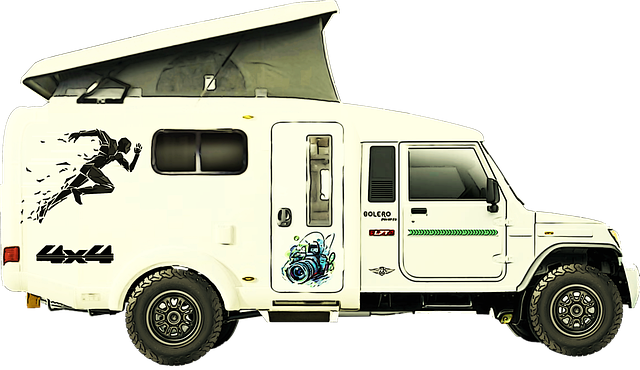Quick Disconnect (QD) mechanisms are essential for Pharr 4×4 repairs and modifications, providing a swift and secure way to attach/detach towing hardware. Regular maintenance, including lubrication and inspection for wear, prevents failures caused by rugged terrain or improper use. When issues arise, a systematic troubleshooting approach, involving diagnostic tools and suitable replacement parts, ensures reliable QD operation for safe off-road adventures and Pharr 4×4 repairs.
“Quick disconnects (QDs), essential components in off-road vehicles like Pharr 4x4s, facilitate smooth drivetrain transfers. This article guides you through mastering Pharr 4×4 repairs focusing on QD components. We’ll explore common issues and causes of failure, offering practical steps for maintenance and replacement. Furthermore, we delve into advanced troubleshooting techniques to diagnose and resolve complex QD problems. By the end, you’ll be equipped with the knowledge to keep your Pharr 4×4 running smoothly off-road.”
- Understanding Quick Disconnects: The Basics of Pharr 4×4 Repairs
- Common Issues and Causes of Quick Disconnect (QD) Failure in Off-Road Vehicles
- Steps for Effective Quick Disconnect Maintenance and Replacement
- Advanced Troubleshooting: Diagnosing and Resolving Complex QD Problems
Understanding Quick Disconnects: The Basics of Pharr 4×4 Repairs

Quick disconnects, also known as QRs or hitch pins, are essential components in Pharr 4×4 repairs and modifications. These simple yet versatile mechanisms allow for easy attachment and detachment of towing hardware, such as hitches, winches, or recovery devices, to your vehicle’s frame. Understanding how they work is crucial when tackling any Pharr 4×4 repair, as it ensures both functionality and safety during off-road adventures.
QRs typically consist of a cylindrical body with a locking mechanism, designed to fit into a corresponding receptacle on the vehicle’s chassis. By simply inserting the QR and rotating or pressing a lever, users can quickly secure or release the hardware, making them ideal for situations requiring frequent attachments and detaches. This feature is particularly valuable in off-road settings where rapid changes in equipment are necessary.
Common Issues and Causes of Quick Disconnect (QD) Failure in Off-Road Vehicles

Quick Disconnect (QD) failures in off-road vehicles are a common problem, often leading to unexpected breakdowns and costly Pharr 4×4 repair bills. These failures typically occur due to several recurring issues and causes. One of the primary culprits is excessive wear and tear from frequent use, especially in rugged terrain. The QD’s rubber seals and metal components are particularly susceptible to damage from sharp rocks, branches, or other debris, leading to leaks or complete disconnection.
Another significant factor is improper maintenance. Without regular lubrication and inspection, the QD’s internal mechanisms can become stiff and rusted, compromising its reliability. Extreme temperature fluctuations, common in off-road environments, can also accelerate wear and cause structural damage. Furthermore, overloading the QD beyond its specified capacity can lead to premature failure, underlining the importance of adhering to vehicle manufacturer guidelines during modifications or upgradings.
Steps for Effective Quick Disconnect Maintenance and Replacement

Quick disconnects (QDs) are essential components in 4×4 vehicles, facilitating easy and swift removal of wheels for various tasks like off-road adventures or routine maintenance. To ensure optimal performance and safety, regular QD maintenance and replacement is crucial. Here’s a straightforward guide tailored for Pharr 4×4 repairs:
Start by inspecting the existing quick disconnects for any signs of wear, rust, or damage. Look for loose connections, unusual noise during wheel rotation, or difficulty in tightening. If any issues are identified, immediate replacement is recommended. Choose high-quality QDs compatible with your Pharr 4×4 model to maintain stability and durability. Before replacing, ensure proper tools are available, including a suitable wrench or socket set. Carefully loosen the old QDs using the appropriate tool, being mindful of cross-threading. Once removed, clean the mounting holes and replace with new quick disconnects, tightening them securely but avoiding excessive force to prevent damage. Regularly check and maintain these critical parts for seamless 4×4 operation.
Advanced Troubleshooting: Diagnosing and Resolving Complex QD Problems

When it comes to advanced troubleshooting, diagnosing and resolving complex quick disconnect (QD) problems in vehicles like the Pharr 4×4 requires a systematic approach. Start by identifying the specific QD component causing issues, as these can range from electrical connectors to mechanical couplings. Utilise diagnostic tools and checks to pinpoint the problem area, such as voltage measurements or visual inspections.
Next, gather the necessary replacement parts and tools tailored for Pharr 4×4 repairs. With proper knowledge and equipment, you can disassemble and inspect each component for damage, wear, or debris buildup. Clean and lubricate as needed, then reassemble with renewed seals or connectors to ensure secure and reliable disconnection and reconnection.
Quick disconnects (QDs) are essential components of off-road vehicles, facilitating smooth power transfer while offering versatility for diverse terrain. By understanding their basic functions, common issues, and advanced troubleshooting techniques outlined in this article—including effective maintenance and replacement steps—owners of Pharr 4x4s can extend the lifespan of these critical parts and enhance their vehicles’ performance during off-road adventures.



